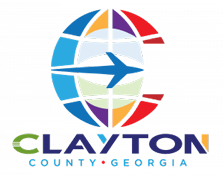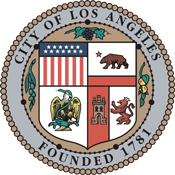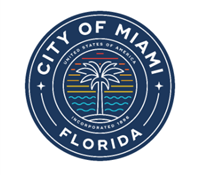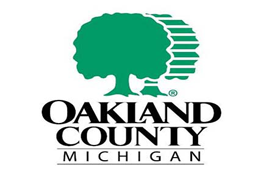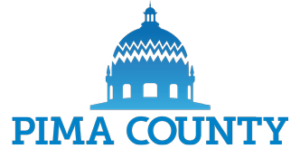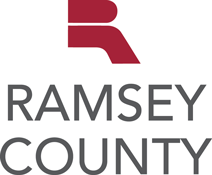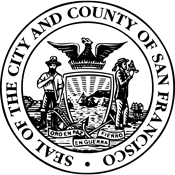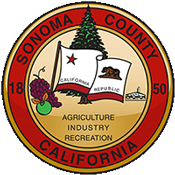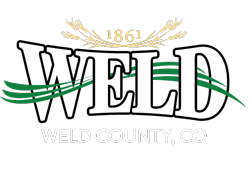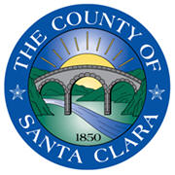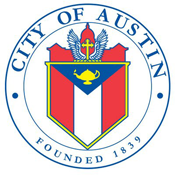In this ultimate guide to revenue cycle management (RCM), CORE covers everything from the basics to get you started to the strategies and solutions that help you overcome RCM challenges and their resulting consequences.
Table of Contents
- What Is Revenue Cycle Management?
- The Purpose of Revenue Cycle Management Software
- 4 Revenue Cycle Management Benefits
- 4 Steps in the Revenue Cycle Management Process
- 6 Revenue Cycle Management Challenges (And Their Consequences)
- 3 Revenue Management Strategies
- Who Benefits from Revenue Cycle Management?
- Use the Best Revenue Cycle Management Software
What Is Revenue Cycle Management?
Revenue cycle management is an institution-wide financial process supporting organizations that work with sensitive financial information. This includes government agencies that must identify, track, collect, and manage incoming payments for services in a scheduled and organized way.
The RCM process is essential in maintaining financial viability and providing exceptional service by making payment obligations easier for everyone involved.
In addition to streamlining secure billing and payments, revenue cycle management can promote citizen engagement by strengthening relationships that build a better sense of community and commitment.
The Purpose of Revenue Cycle Management Software
Revenue cycle management software exists to:
- Connect systems and data
- Manage collection, revenue, and reconciliation
- Communicate with and engage citizens
In a government agency, interoperability is crucial because people from different locations and branches may need access to the information the central office collects. A united system saves employees time and hassle, translating into better service for citizens.
Any public-facing government agency must maximize incoming revenue and ensure it goes into operations and public services. The best revenue management cycle software can assist in finding new forms of revenue sources and optimize current sources while reducing unnecessary expenses.
Creating more efficient ways to submit payments makes interacting with and receiving payments from citizens easier. They’ll no longer have to wait in long lines and fill out paperwork. Revenue management cycle software allows them to do that all within the comfort of their home—allowing the government office to focus on citizens needing extra assistance. With CORE, solutions like these come together in one system. The system forms a comprehensive picture of an institution’s revenue and financial status—the ultimate purpose of revenue management.
4 Revenue Cycle Management Benefits
Revenue cycle management brings many benefits to organizations: fast and error-free payments/reconciliations, deep insights into contextual data, and better user service.
Here are more revenue cycle management system benefits.
1. Integrates Multiple Systems
- Consolidates data into one accessible, real-time live view
- Creates more accurate reconciliation in ledgers and accounts
- Eases multidepartmental revenue collections
- Establishes transparency for end-to-end transactions
- Offers insight into payment experiences
- Reduces the chance of liability due to mishandling sensitive information
- Traces all payments, allotments, and transactions for audits with ease
2. Automates Administrative Revenue Processes
- Decreases the possibility of human error with transactions
- Decreases PCI risks throughout the reconciliation process
- Eliminates frustrating and costly entry errors
- Reduces the time departments spend performing manual tasks
- Streamlines sending invoices, processing payments, messaging users, performing reconciliations, and compiling reports
- Tracks all transactions across departments with ease
3. Assesses the Quality and Accuracy of Finances and Services
- Allows better customer service
- Builds citizen trust by using their preferred form of payment
- Collects revenue quicker through better service and convenience
- Eases the purchase and payment process
- Engages with citizens more easily
- Provides a real-time, comprehensive, and meaningful understanding of the data
- Keeps payment information safe and secure
4. Maintains Organizational Compliance with the Highest Security and Privacy Requirements
- Increases control over compliance management
- Improves the reporting process and reduces liability
- Helps your organization avoid fees and fines
- Maintains your good reputation
- Protects personal and financial information from unauthorized access
- Updates with the latest PCI regulations, unlike legacy systems
4 Steps in the Revenue Cycle Management Process
The exact steps in the revenue cycle management process vary depending on the industry, but the general steps for municipalities are as follows.
Step 1: Information Capture
This first step includes gathering the required information before issuing an invoice. Information may include personal data like a name, address, or bank account number. It also includes forms for government verification, insurance eligibility status, and authorization.
Step 2: Charge Capture and Billing
Once an agency renders services, the system posts the correct charge and sends an invoice and explanation of charges to the responsible party for payment, along with any notifications.
Step 3: Receivables Management
Next, claim status is edited/updated (if necessary), bills are submitted, and payments are posted. Reminders and collections notices are also sent as needed, and late fees (if applicable) are added to the charge total.
Step 4: Revenue Enhancement
The final step enhances revenue by gathering data into decipherable reports for driving data-backed decisions that move your department closer to its financial goals.
6 Revenue Cycle Management Challenges (And Their Consequences)
While the four RCM steps seem straightforward, they’re not necessarily simple. Challenges inevitably arise, potentially creating financial and compliance havoc along the way.
Here are six common RCM challenges and their potential consequences.
1. The Lack of Following a Financial Policy
Not utilizing a financial policy creates compliance issues with the financial, security, and privacy standards of government organizations. Management should consistently implement current standards and ensure they’re understood and followed without exception. Otherwise, your organization faces hefty fines and a battered reputation.
2. Technological Glitches
Glitches are common when multiple systems attempt to work together. Whether the most current information isn’t in the right place at the right time or one system goes down and affects the rest, managing technology in the revenue cycle can be a struggle.
The consequences are wasted time spent on fixing problems, citizens’ inability to pay their bills, revenue gaps, loss of trust, and inaccurate data. A single revenue cycle management software handling all RCM-related tasks is essential.
3. Insufficient Staff or Improper Training
Nowadays, every industry experiences an increase in turnover and unfilled positions. Government offices are no different. Constant turnover and evolving processes make keeping everyone up to current protocols challenging. It’s time-consuming and expensive.
With ever-tightening budgets, organizations must create policies and procedures that are accessible to all employees, whether they’re established or new hires.
4. Entry Errors
It’s no secret that people make mistakes, making manual data entry time-consuming, expensive, and full of inaccuracies. One of the biggest challenges in the revenue cycle is catching and eliminating data entry errors, which is a very labor-intensive management task.
It’s essential to remember that billing errors don’t just affect your organization; they also frustrate payees and lower constituent satisfaction. Using an automated system for revenue-related data entry accelerates the process and decreases the chance of mistakes.
5. Late Payment Collection
To keep your organization running, you must collect payments from citizens for services rendered. This task requires determination and patience—and time.
Employees will spend a lot of time organizing information, entering payment details, and contacting late payers. It can feel like an endless cycle, which is why many organizations turn to revenue management systems that can automate such tasks.
6. Incomplete or Incorrect Reports
Reporting inaccuracies can have long-term managerial and financial implications that trickle into every department. As mentioned before, compliance with security and privacy standards is vital to a government organization, so when a pattern of incorrect reports appears, reputation is affected. Plus, the organization may face fines.
Incomplete or incorrect reports make goals impossible to reach and can potentially devastate a department’s financials. If an organization faces this problem, they need revenue cycle management software that correctly inputs and organizes information to ensure reporting accuracy.
3 Revenue Management Strategies
Since the consequences of improper revenue cycle management can be dire, having a smart, structured, substantiated revenue management strategy is essential. Here are the three most common ways to accomplish that.
1. Do-It-Yourself Revenue Cycle Management
Doing it yourself is the traditional way of managing revenue, but it’s nearly impossible to accomplish it these days. Organizing an entire revenue cycle without professional solutions, especially as you begin or continue to scale, is too complicated for most municipalities to do alone.
Organizations attempting to do this independently invest massive amounts of time and effort, only for this strategy to fail. Inevitably, that’s when they decide to invest in revenue cycle management services.
2. Outsourced RCM
Having a company come in and take over an organization’s revenue cycle management can be helpful. There are some downsides, however, and the situation may lead to:
- A fragmented administrative process
- Having a narrow view of your data
- Wasting time on misaligned goals
3. A Revenue Cycle Management Software Solution
This solution is the revenue management strategy CORE suggests. Having an all-encompassing revenue cycle management software solution that you manage and we support gives your organization the best of both worlds. You’ll get the benefits of the following:
- 24/7 support from highly trained analysts and solutions engineers
- A complete view into decision-driving data
- A simplified process
- Automated tasks (invoicing, messaging, reconciliation)
- Merchant services
- PCI compliance and security that exceeds the industry’s highest standards
- Resource management (like ticketing or events)
- Seamless integration
- Total control
Who Benefits from Revenue Cycle Management?
Municipalities benefit significantly from revenue cycle management services. The solution is a one-stop, frictionless, secure receipt-to-reconciliation payment and engagement platform that resolves countless challenges throughout the revenue cycle.
Local, state, and federal government agencies have constituents that want modern, convenient interactions, especially as municipalities continue to evolve. Municipalities need the best revenue cycle management software to simplify payments and boost inbound revenue collections, improving their constituent’s overall welfare and satisfaction.
Use the Best Revenue Cycle Management Software
Once you conclude that revenue cycle management software is the solution, it’s time to choose the best service for your municipality.
CORE’s decades of experience and best-in-class solutions have served 1500+ clients with billions of annual payments. Our revenue cycle management service brings your government organization a unique project configuration, creates efficiencies for your staff, and delivers personalized customer engagement experiences. We’re committed to your success.














